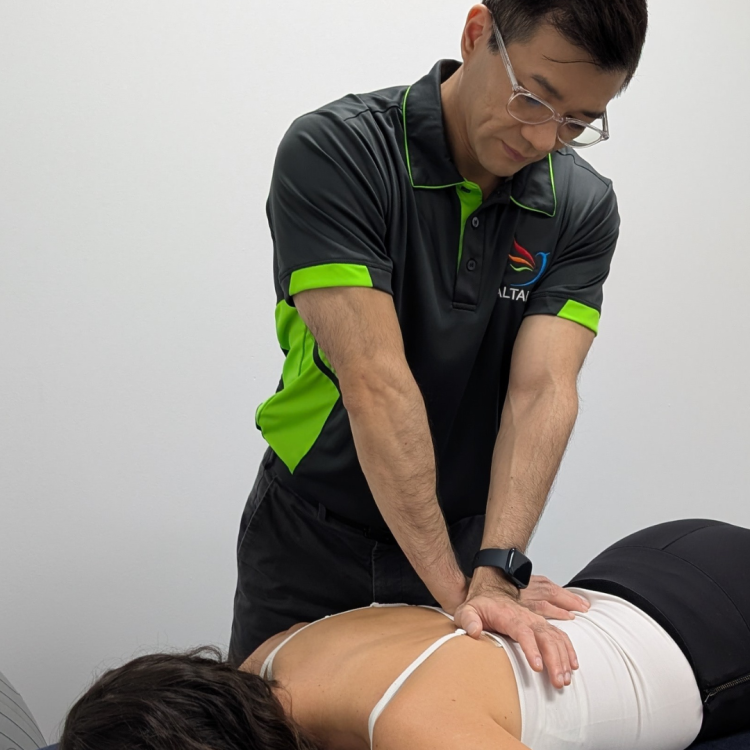The common musculoskeletal issues of cycling

Cycling is a popular, fairly low-impact form of exercise, however, It’s no surprise that cycling can cause strain on the body due to the use of repetitive movements. Certain injuries and issues from cycling can arise for a variety of reasons such as poor posture, overuse, limited flexibility and age. Addressing these concerns may involve a combination of strength and flexibility exercises, appropriate riding techniques and bike set up, as well as professional guidance to minimise or help manage these musculoskeletal issues.
Here are some of the most common musculoskeletal issues of cycling, as well as some helpful tips for prevention and management:
Neck and shoulder pain – Pain in the neck, shoulder and even head region can often be due to reduced flexibility or too much pressure in the area. It is also important to remain aware of posture when riding to avoid tension in these areas, particularly on long bike rides.
Tip: Check your handlebar position. If your neck feels hyperextended when looking up, this may indicate the need to adjust your handlebars slightly higher. Regular, gentle stretches of the neck and shoulder area can encourage the muscles to move more freely also.
Back pain – Similarly to neck pain, back pain when riding is often a consequence of poor posture and too much tension occurring. Extended time spent hunched over the handlebars is bound to have an effect on the way your back feels, in particular the lower back. Back pain can also lead to pain in other areas such as the hips or legs, as these muscles are connected.
Tip: Your position on your bike can be a major cause for why you may be feeling pain in your back. Again, adjusting handlebars may alleviate some pressure in this area, and maintaining an appropriate posture when riding is also helpful. Regular lower back and hip stretches, as well as increasing core strength can help to increase power and relieve tension. If you’re not sure what type of exercises to do, seeking help from a health professional such as a physiotherapist may be very beneficial.
Knee pain – Due to cycling’s repetitive nature of flexion and extension, there is an increased amount of stress place on the patella-femoral joint (the knee cap). This often leads to a deep ache around the kneecap, as well as stiffness, which can be very uncomfortable and prevent you from continuing cycling.
Tip: Like most of the other musculoskeletal issues caused from cycling, knee pain can often be caused by incorrect bike use or bike set up. Ensuring your saddle height is appropriate for your height can help to decrease the pressure placed on one group of muscles. Establishing a routine of knee, hip and hamstring stretches, as well as foam rolling will also help to reduce tension in the knee cap and encourage better movement. If pain persists and does not improve after trying these things consistently, it is best to seek help from a health professional such as a physiotherapist.
Achilles issues – Achilles tendinopathy is an overuse injury which can often be due to cycling too frequently without allowing time for rest and recover in between rides. The set-up of your bike may also affect this too.
Tip: Firstly, check the set-up of your bike and ensure the saddle height is appropriate for you. Also try to allow for adequate rest in between bike rides with calf stretching and the use of ice to allow for healing.
Hand and wrist discomfort – Due to how cycling is performed, it is common for cyclists to experience hand and wrist pain and discomfort. There is a lot of weight positioned on the wrists when cycling, as well as holding the handlebars in position for a long duration of time, which can contribute to this pain, as well as feelings like pins and needles.
Tip: Alleviating this pain may be as simple as adjusting your handlebar grip position more frequently throughout a ride to avoid a buildup of tension. Try using padded gloves to prevent pain in your hands also.
If you can relate to feeling one or more of these musculoskeletal issues from regular cycling, try a few of these tips! If you are struggling to feel any improvements or need some further assistance, contact one of our experienced allied health professionals. Altaira’s Lead Physiotherapist, Michael, holds both a Bachelor of Physiotherapy and Bachelor of Medical Science degrees, and has an extensive background in Occupational Health. He is an Australian Physiotherapy Association member and believes in the provision of evidence based practice and holistic client-centred care. He is extremely passionate about assisting clients to maintain their independence and empowering them to self-manage their musculoskeletal health in a way that is relevant and meaningful for them. Book in a consult with Michael via: Make a Booking (nookal.com) Learn more about Altaira’s Allied Health services: Allied Health – Altaira Services









